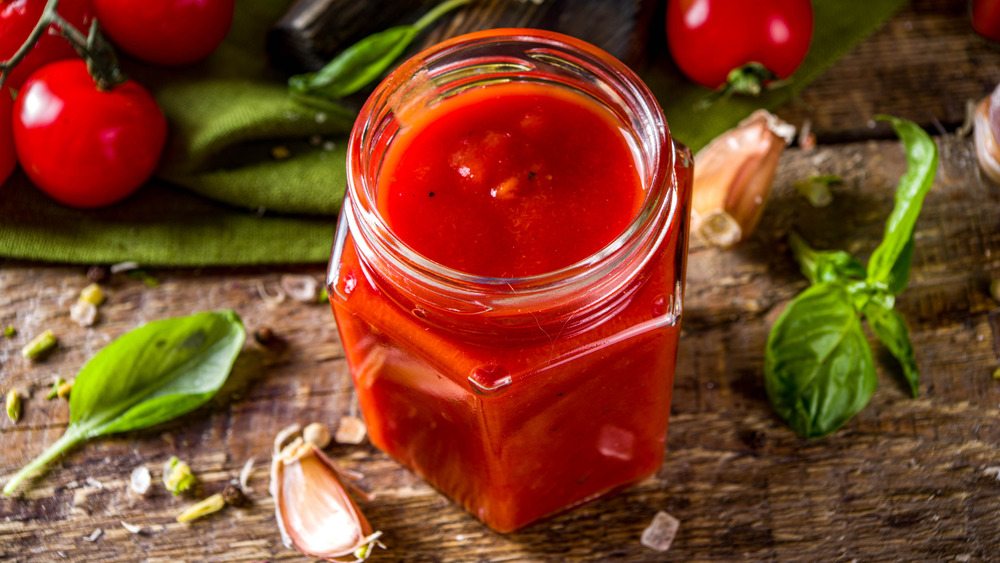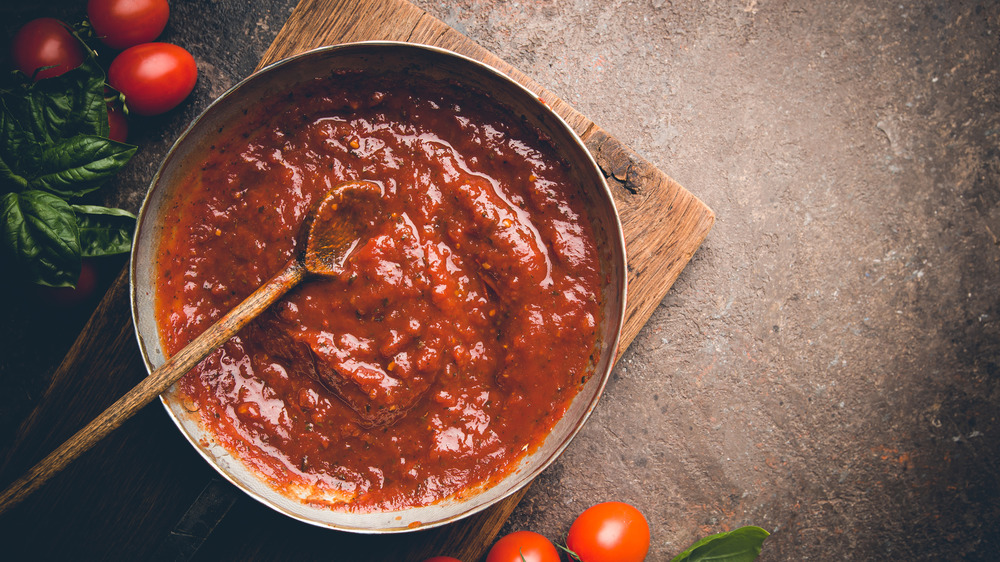This Is The Real Difference Between Arrabbiata And Marinara Sauce
We may receive a commission on purchases made from links.
As with many popular foods, the origins of marinara sauce are a bit fuzzy. According to The Daily Meal, marinara (derived from the Italian word for mariner), originated in Naples, Italy. Legend has it, the sauce was invented by sailors in the 1700s who returned from the Americas with tomatoes, a fruit not native to "the boot." And so a sauce — a very popular sauce, at that — was born.
In its basic form, The New York Times states that marinara, "consists of olive oil, ripe tomatoes, a substantial hit of garlic, a nip of dried chile and dried oregano (or, in modern times, fresh basil)." While it's just as easy to head to the local supermarket to pick up your favorite brand of the jarred stuff, these basic pantry ingredients are easily accessible, making it a cinch to whip up a Sunday gravy that every nonna would love.
If you can make marinara, you can make arrabbiata
Marinara has become so ubiquitous with everyday cuisine as it can be used as a for a variety of dishes; MasterClass suggests using the tomato sauce with your favorite homemade pizza recipe or as a dip, adding the ingredient into chili, and for classic dishes like lasagna and chicken Parmesan.
As if that wasn't enough, marinara also acts as the base for a number of other pasta sauces. One of our favorite derivatives of marinara is arrabbiata sauce. Per The Guardian, this "angry" sauce hails from Italy's capital of Rome, and is essentially a humble marinara with the important addition of spicy chilis, making this similar looking variation pack a serious punch. As for which pasta shape is best suited for arrabbiata? NDTV Food recommends penne for its absorption capabilities. (And as for how spicy to make it? That's entirely up to the chef's preference, so buyer beware.) Va bene!

